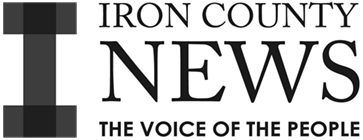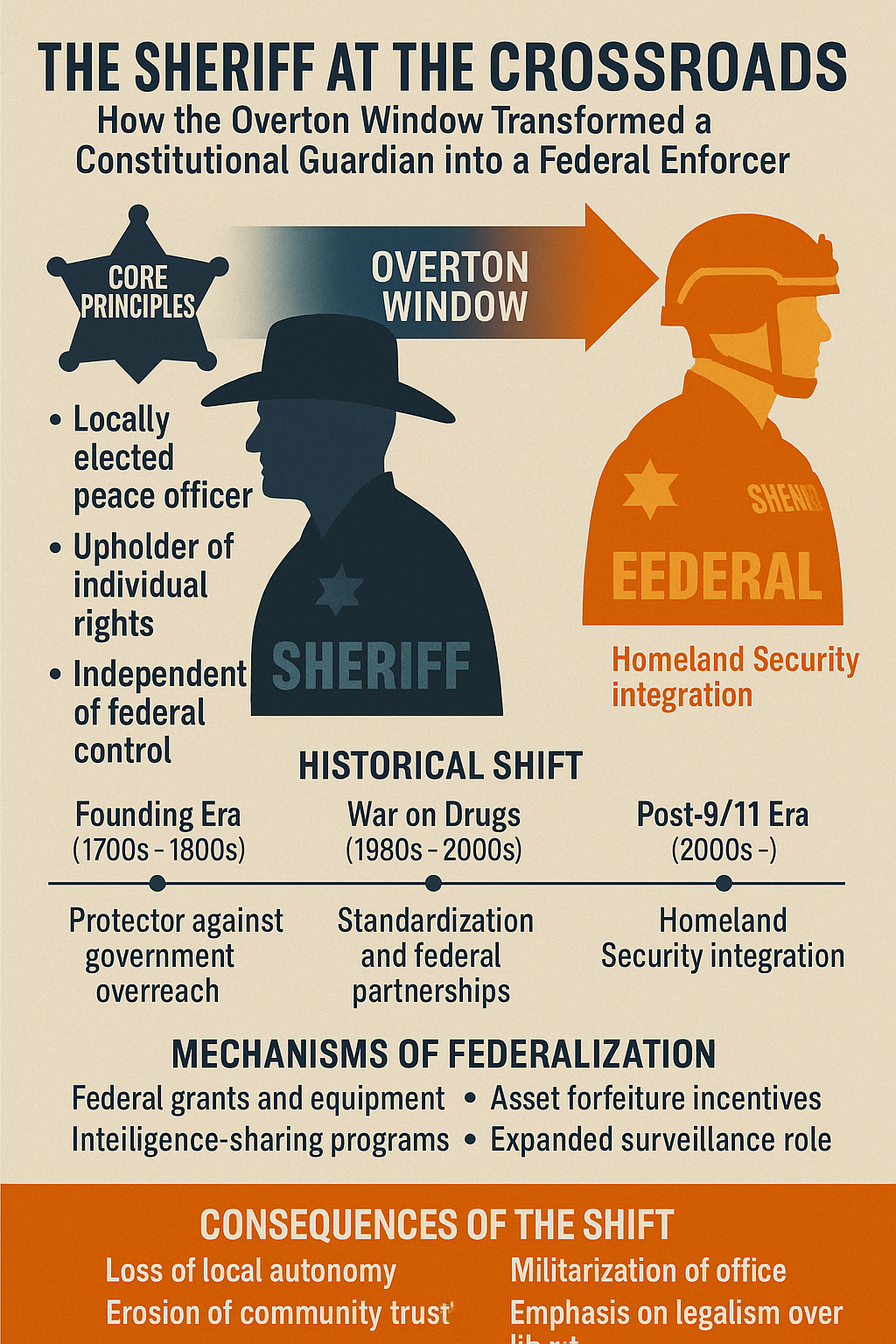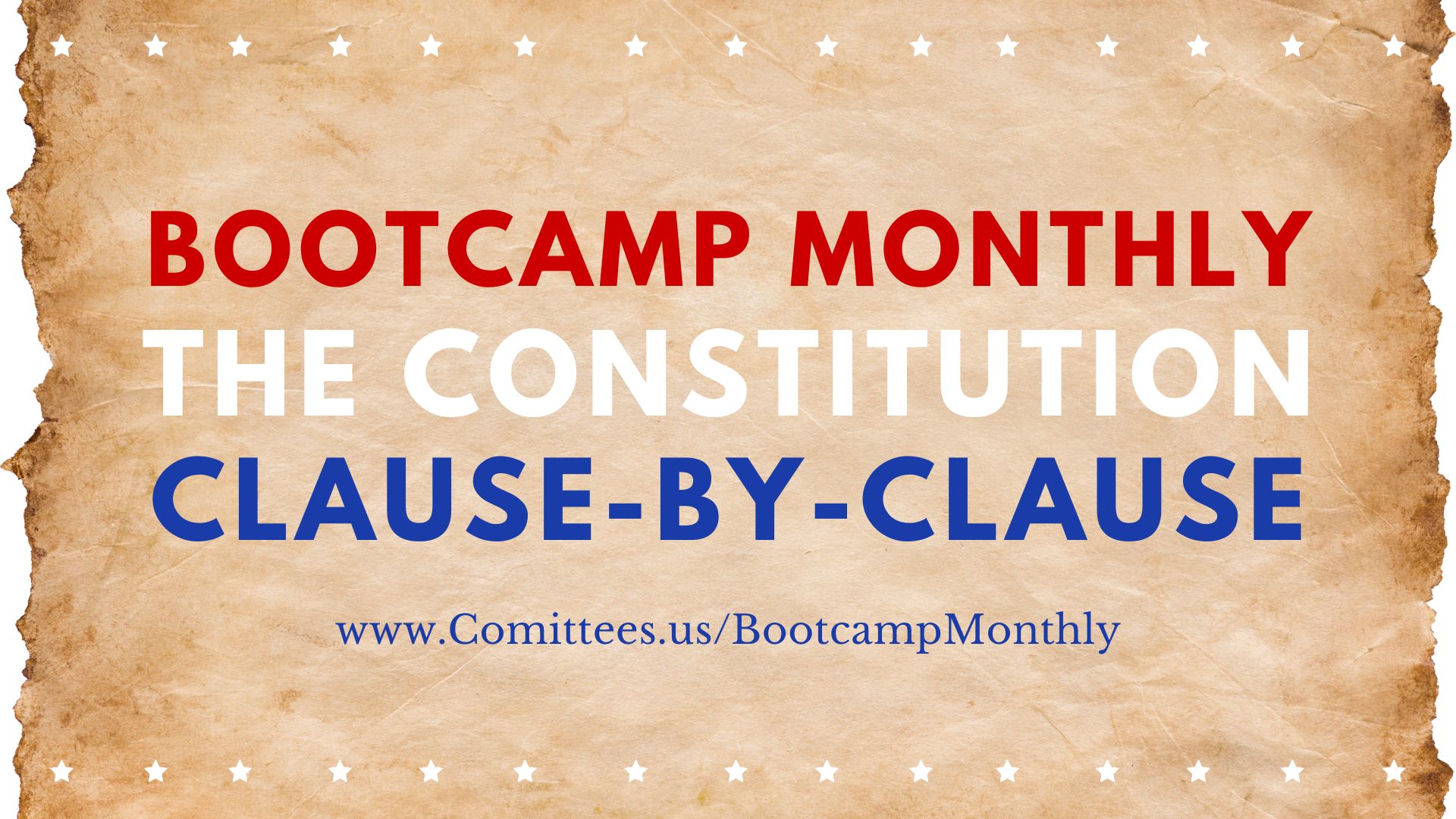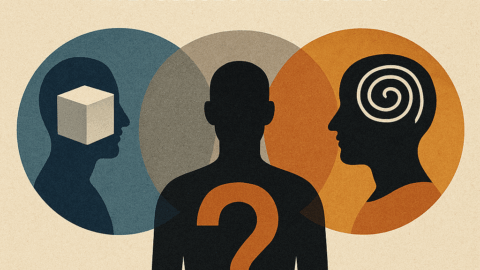Here’s a detailed article explaining how the Overton Window has shifted the Office of the Sheriff—from a locally elected constitutional peacekeeper to, in many cases, a federalized, militarized enforcer of centralized authority.
From Guardian of the People to Arm of the State: How the Overton Window Moved the Office of Sheriff
“The sheriff is the chief executive and administrative officer of the county, chosen by the people.”
—Early American legal tradition
The Sheriff—once the most trusted and constitutionally grounded law enforcement figure in America—has undergone a radical transformation. Originally conceived as a local protector of liberty, beholden only to the people of his county, the modern sheriff is increasingly caught between community accountability and federal entanglement, often serving as an enforcer of bureaucratic law rather than a defender of natural rights.
This change didn’t happen overnight. It’s a slow, engineered shift in the Overton Window—what society sees as normal, acceptable, or even patriotic in the role of a sheriff.
I. The Founders’ Sheriff: A Constitutional Guardian
In the founding era, the sheriff was locally elected, independent of federal control, and functioned as:
- Chief peace officer of the county
- Defender of constitutional rights (especially property and due process)
- Bulwark against federal or state overreach
- Accountable only to the people, not to appointed bureaucrats or national agencies
Core Functions:
- Maintain peace, not just enforce laws
- Intervene if federal agents violated rights in the county
- Protect the sovereign rights of individuals and property owners
- Represent local law over distant power
II. The Overton Window Shift: From Defender to Enforcer
| Era | Role of Sheriff | Overton Window Position |
|---|---|---|
| Founding–1800s | Locally elected peace officer | Norm |
| Progressive Era (1900–1930s) | Begins professionalizing, focus shifts to crime | Local autonomy questioned |
| Post-WWII Era | Rise of federal policing and standardization | Increasing dependency on state/federal frameworks |
| War on Drugs (1980s–2000s) | Federal grants + asset forfeiture entangle sheriffs | Militarization & loss of local independence |
| Post-9/11 to Present | Homeland Security partnerships, surveillance roles | Sheriff becomes node in federal control grid |
III. Mechanisms of Federalization
- Federal Grants & Equipment
- DHS and DOJ fund sheriff offices in exchange for cooperation
- MRAPs, drones, riot gear—tools of war now common in rural counties
- Asset Forfeiture & Financial Dependency
- Incentivized seizure of property often without due process
- Ties financial survival to aggressive enforcement rather than public trust
- Fusion Centers & Intelligence Sharing
- Sheriffs looped into nationwide surveillance and data-gathering networks
- Local autonomy reduced under federal coordination
- Homeland Security Deputization
- Sheriffs assigned to counterterrorism roles and federal task forces
- Shift from peacekeeping to preemptive control and monitoring
- Legalism over Liberty
- Stage 4 morality: “If it’s legal, it must be right”
- Emphasis on obedience over conscience, order over justice
IV. Consequences of the Shift
- Loss of Constitutional Backbone
- Fewer sheriffs defend local rights against state or federal overreach
- “I’m just doing my job” replaces moral discernment
- Militarized Posture Toward Civilians
- Public viewed as a threat rather than the constituency
- SWAT raids replace warrants and knock-and-talks
- Fear over Trust
- Communities no longer see the sheriff as “one of us”
- Rise of the “thin blue line” loyalty over citizen service
V. Exceptions Still Exist: The Constitutional Sheriff Movement
Some sheriffs, often in rural or liberty-minded counties, have pushed back:
- Refuse to enforce unconstitutional mandates (e.g., gun control, lockdowns)
- Assert local sovereignty against federal intrusion
- Participate in Constitutional Sheriffs and Peace Officers Association (CSPOA)
These sheriffs embody the original Overton Window—even as they are framed by media and officials as “extremists.”
VI. Cultural and Psychological Framing
- Stage 4 Legalism: Citizens equate law enforcement with morality
- Hero Worship: Sheriffs praised for militarized strength, not peacekeeping
- Propaganda: “If you question law enforcement, you support chaos”
The public has been conditioned to expect control, not protection—to equate obedience with safety, not liberty.
VII. Restoring the Original Role
To bring the Sheriff’s Office back into alignment with the Founders’ intent:
- Educate communities about the sheriff’s constitutional role
- Refuse federal entanglements and dependency
- Uphold individual rights over legalism
- Rebuild trust through local accountability and transparency
- Return to the identity of peace officer, not federal enforcer
Conclusion: A Local Office at a National Crossroads
The sheriff was once the last line of defense between the citizen and the state. Today, too many serve as the first arm of enforcement, surveilling, seizing, and subordinating to federal power.
Will the sheriff remain the people’s last constitutional guardian—or become just another agent of centralized control?
The answer depends on where we reset the Overton Window, and whether we demand sheriffs who honor their oath to the Constitution, not just to the state.





